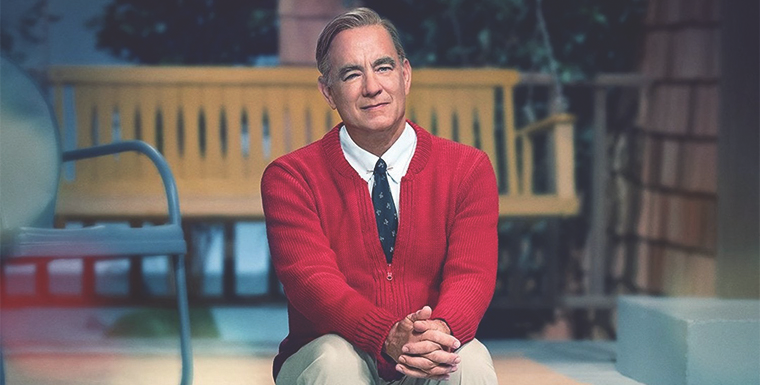
photo Courtesy Of Avalon Theatre
“What do you do with the mad that you feel?”
This lyric from a children’s song on
Mister Roger’s Neighborhood
, a show that has done a lot in its day. It defined the childhood of a generation, secured millions in funding from Congress, and, most recently, stood center stage in Marielle Heller’s
A Beautiful Day in the Neighborhood
.
The film follows embittered
Esquire
journalist Lloyd Vogel, who is sent to write a profile on beloved children’s TV entertainer Fred Rogers. Initially upset by being forced to write a “useless fluff-piece,” Vogel’s initial meeting with Rogers blossoms into a lifelong friendship that teaches him about forgiveness, family, and love. This film is, at its core, about a broken man learning that pain doesn’t have to be the end of the story.
Before you see
A Beautiful Day in the Neighborhood
, know that you are going to feel a lot. While many films make us feel uneasy, scared, heartbroken, or angry, this movie is rare in that it makes you feel good and loved while handling complex, difficult moments.
As uplifting as this film is, do not be fooled into thinking it is flat or uninteresting.
Neighborhood
has moments of intense and even unpleasant emotions, sadness and rage that burn through the screen until you are left with a tangled mess in your lap. The protagonist’s struggles build up and become so claustrophobic that those in the audience can’t help but be transported to a time in childhood when all of life’s problems seemed incomprehensibly big. By the time Hanks, as Rogers, asks the question “What do you do with the mad that you feel?”, you will be begging for the answer along with the film’s protagonist.
Lovers of film’s technical elements may not have much to sink their teeth into, when you compare this movie to some other recent releases. However,
Neighborhood
has its own shining moments of cinematography. A dream sequence involving puppets, lost loved ones, and Vogel’s wife stands out as a particularly memorable and poignant scene. The most effective directorial choice in the film is the way Rogers offers advice to Vogel by speaking directly to the camera. When he says, simply, that you are special and worthy of love, you can’t help but believe it.
This brings us to what is easily the film’s most incredible and impactful element: the performances. Lloyd Vogel is so compelling and heartbreakingly real that a viewer can’t help but see themselves up there on the silver screen. As for Tom Hanks, to say that he portrays Mr. Rogers accurately would be an understatement. Hanks spent hours and hours analyzing facial tics and speech patterns, and it pays off in a massive way. His voice carries all the warmth that Rogers’ did, and he exudes the same kind, gentle wisdom that guided so many children through life’s difficulties. He does the man justice, and in this case, that is one of the highest compliments that could be given.
A Beautiful Day in the Neighborhood
is complex, involves difficult subjects, and may even make you confront challenges in your own life. However, so too did episodes of Mister Rogers’
Neighborhood
, and like its source material, this film will present you with difficulties but promise that you will not have to struggle with them alone. Around Christmas time, this movie serves as a brilliant reminder of how to be good to both those around us and ourselves. It seems only fitting to end with a note from Mr. Rogers himself, to say “I like you just the way you are.” Be good to yourselves: it’s what he would have wanted.
